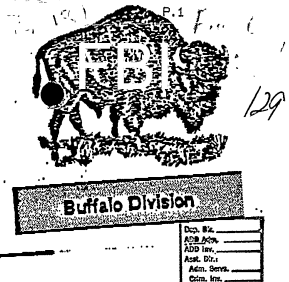|
|
Documents
The Weizmann Institute began
operations at the close of WWII under the direction of Israeli nuclear
weapons research pioneer Ernst David
Bergmann. It is named after famed chemist Chaim Weizmann, a Russian who
immigrated to the UK and revolutionized the production of acetone needed
for gunpowder production in WWI. The Zionist activist lobbied and
charmed Lord Balfour during the drive for the creation of a Jewish state in Palestine
and became Israel's first president in 1949.
 Abraham Feinberg, a Democratic
Party operative and David Ben-Gurion's designated North American nuclear
fund-raising coordinator, began courting Nobel
laureate Glenn T. Seaborg on behalf of the Weizmann Institute in the
early 1950's. After becoming head of the Atomic Energy Commission under JFK,
Seaborg played a key role in derailing warranted AEC and criminal
investigations of the NUMEC uranium diversion in the 1960s. Upon
leaving the AEC in 1971, Seaborg accepted Weizmann Institute chairman
Abraham Feinberg's invitation (and an honorarium equivalent to nearly
10% of his annual salary) to keynote the annual Waldorf Astoria event.
Seaborg's speech reaffirmed
a new US policy of covering up Israel's arsenal.
"During my tenure as Chairman of the AEC I was asked on numerous
occasions whether I thought Israel was a nuclear power—or less
euphemistically—did she have the bomb?...Now in retrospect, I often
wished I had said, 'Yes, she is a nuclear power, the kind that knows of,
and makes use of, the atom's power for peace.'" After the NUMEC uranium
theft diversion investigation was reactivated in the late 1970s, Seaborg
refused to talk to FBI agents after DOE officials told him NUMEC u-235
was recovered in Israel. Abraham Feinberg, a Democratic
Party operative and David Ben-Gurion's designated North American nuclear
fund-raising coordinator, began courting Nobel
laureate Glenn T. Seaborg on behalf of the Weizmann Institute in the
early 1950's. After becoming head of the Atomic Energy Commission under JFK,
Seaborg played a key role in derailing warranted AEC and criminal
investigations of the NUMEC uranium diversion in the 1960s. Upon
leaving the AEC in 1971, Seaborg accepted Weizmann Institute chairman
Abraham Feinberg's invitation (and an honorarium equivalent to nearly
10% of his annual salary) to keynote the annual Waldorf Astoria event.
Seaborg's speech reaffirmed
a new US policy of covering up Israel's arsenal.
"During my tenure as Chairman of the AEC I was asked on numerous
occasions whether I thought Israel was a nuclear power—or less
euphemistically—did she have the bomb?...Now in retrospect, I often
wished I had said, 'Yes, she is a nuclear power, the kind that knows of,
and makes use of, the atom's power for peace.'" After the NUMEC uranium
theft diversion investigation was reactivated in the late 1970s, Seaborg
refused to talk to FBI agents after DOE officials told him NUMEC u-235
was recovered in Israel.
In October of
1992 personnel at the Yuma Proving Ground, which tests nearly
every significant
ground combat weapons system, detected a University of Buffalo computer
system user had penetrated their military computer network via New
Mexico State University. The senior majoring in Chemical Engineering
hacked the UB system to obtain high-level privileges using access
codes stolen graduate students. Soon after the BU hack "computers from
the Weizmann Institute for Science accessed computers from NM SU to
penetrate computers at YPG." FBI investigators suspected the BU
student, arrested by Amherst Town police on October 8, 1992,
passed the secret access codes to Weizmann. FBI
counterespionage
officials uncovered Weizmann's clandestine nuclear development role and
US funding network, but closed the investigation.
|
FBI File/Size |
Contents |
|
02242012release
letter.pdf
133 KB 3 pages |
FBI FOIA release letter. |
 |
|
|
1176820-000 --- 65W-BF-28197 --- Section 1 (1037802)
5.6 MB 132 Pages |
Handwritten notes of the computer hacking incident. Request
that the
IRS provide background information on the Weizmann Institute
of Science in Rehovot, Israel on December 21, 1992. Interview of
UB computer center employee. December 15, 1992 interview of
employee explaining terms of use contract for university
computers, how hacker "showed no remorse," measures UB computer
staff took to keep hacker for abusing access. FBI news
clippings about the Weizmann Institute. January 1993
Airtel on computer access terms of use, revocation of hacker's
engineering account, report based on open literature, American
Committee for the Weizmann Institute, allegations of nuclear
weapons research, "design of smaller, lighter nuclear warheads."
Misuse of a computer charges, Grand Jury subpoenas,
|
 |
|
1176820-000 --- 65w-BF-28197 ---
Section 2 (1043223)
1.3 MB 33 Pages |
Censored
affidavits, March 11, 1994 investigative summary, censored
information on subpoenas in New York, review by National
Computer Crime Squad (NCCS). Material referred to other
government agencies for review and release. |
 |
|
1176820-000 --- 65W-BF-28197-
AUX --- Section 1 (1037801)
567 KB 10 Pages |
Referrals
to Counter Intelligence Division, hand carried envelopes. |

In accordance with Title 17 U.S.C.
Section 107, this material is presented
without profit for research and educational purposes,
most importantly understanding how government functions during law
enforcement actions involving Israel and Israel lobbyists.
The Israel Lobby Archive has
neither affiliation
with the originator of
the content nor is it endorsed or sponsored by
the originator. Information appearing in [ ],
hyperlink, or
otherwise noted is provided to clarify events, identify individuals, or
correct spelling. Non-Israel Lobby Archive hyperlinks are for
additional reference information. |
|
